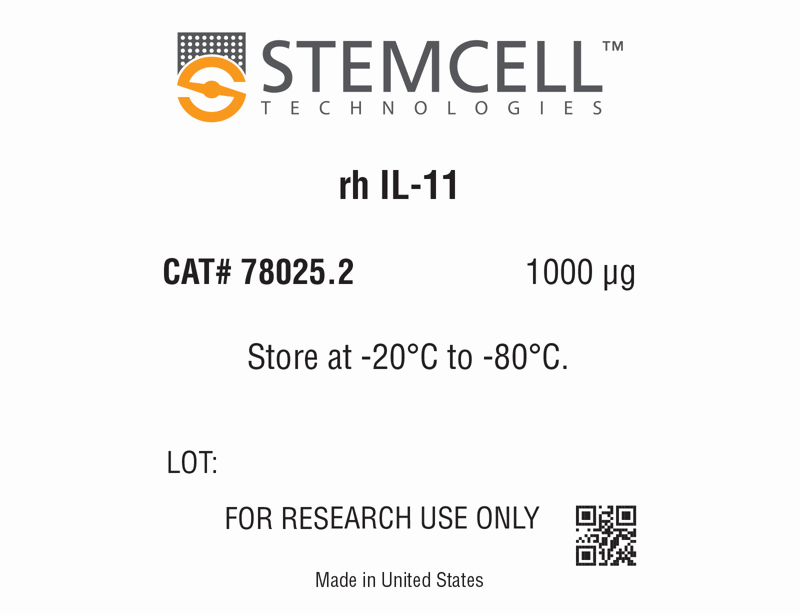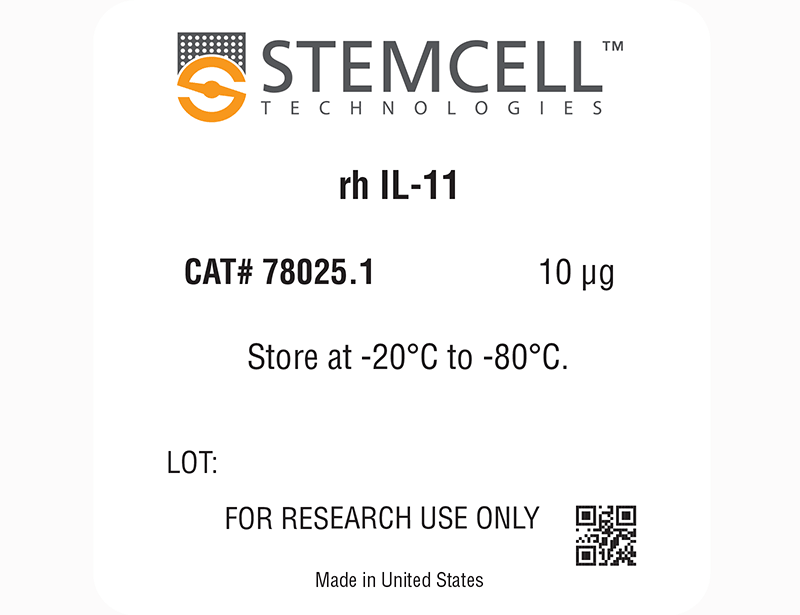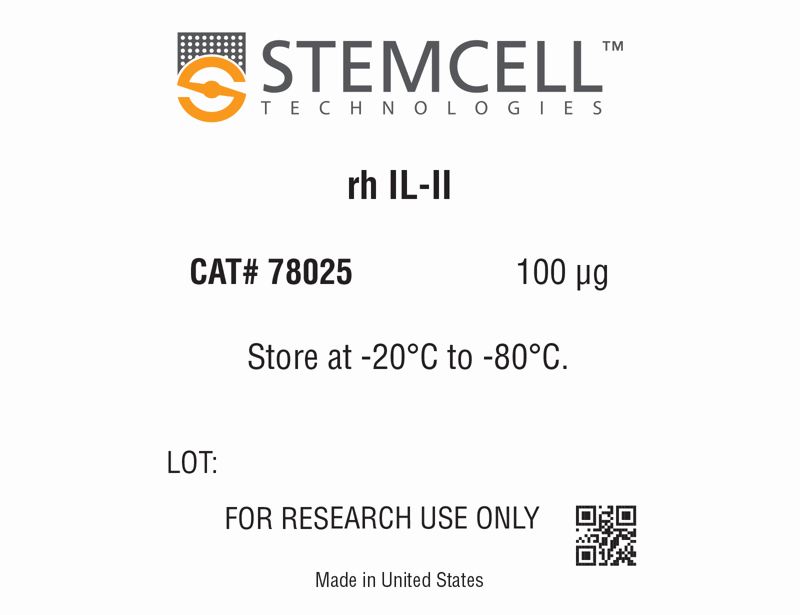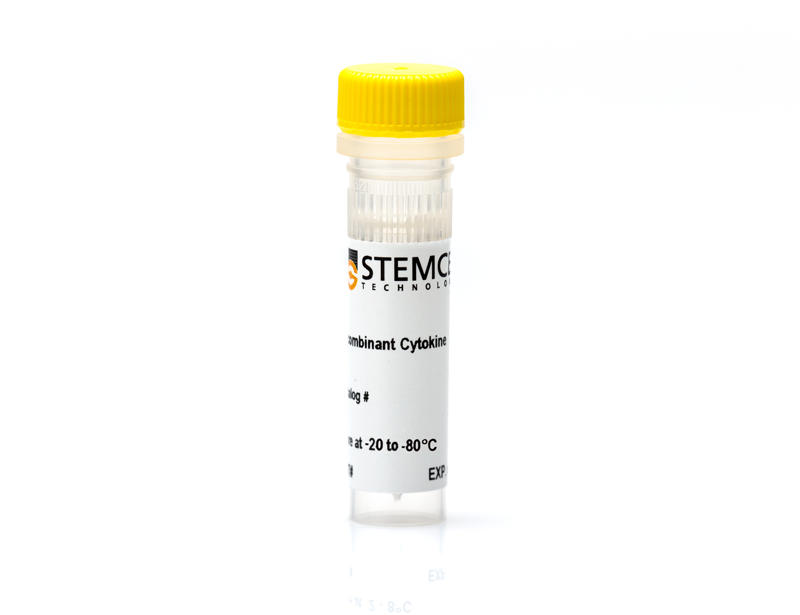Human Recombinant IL-11
Interleukin 11
概要
Interleukin 11 (IL-11) is a pleiotropic cytokine with effects on various tissues including the bone marrow, brain, and intestinal mucosa (Du & Williams). It belongs to the IL-6 family of cytokines that share a common signal transducer, gp130. IL-11 induces the proliferation of hematopoietic stem cells (Lemoli et al.) and megakaryocytic progenitor cells (Bruno et al.), the maturation of megakaryocytes (Burstein et al.), and the production of platelets (Neben et al.). IL-11 is produced by a variety of cell types including hematopoietic cells, mesenchymal cells, epithelial cells, and neuronal cells. It was first cloned from a cDNA library of the human bone marrow-derived stromal cell line KM-102 (Kawashima et al.). The binding of IL-11 to its receptor induces heterodimerization with the gp130 subunit and activation of JAK tyrosine kinases. IL-11 was the first pharmacologic agent approved for the treatment of chemotherapy-induced thrombocytopenia. IL-11 also plays a role in cancer progression by inducing the proliferation of epithelial cancer cells and the survival of metastatic cells at distant organs. Recently, IL-11 has gained interest for its role in the pathogenesis of diseases in dysregulated mucosal homeostasis associated with STAT3 upregulation, including gastrointestinal cancers (Putoczki et al.).
Subtype
Cytokines
Alternative Names
Adipogenic inhibitory factor, AGIF, Interleukin-11, Oprelvekin
Cell Type
B Cells, Hematopoietic Stem and Progenitor Cells, Other, Pluripotent Stem Cells, T Cells
Species
Human
Area of Interest
Cancer Research, Immunology, Stem Cell Biology
Molecular Weight
19.3 kDa
Purity
≥ 95%
技术资料
| Document Type | 产品名称 | Catalog # | Lot # | 语言 |
|---|---|---|---|---|
| Product Information Sheet | Human Recombinant IL-11 | 78025, 78025.1, 78025.2 | All | English |
| Product Information Sheet 1 | Human Recombinant IL-11 | 78025.1 | All | English |
| Safety Data Sheet | Human Recombinant IL-11 | 78025, 78025.1, 78025.2 | All | English |
数据及文献
Data
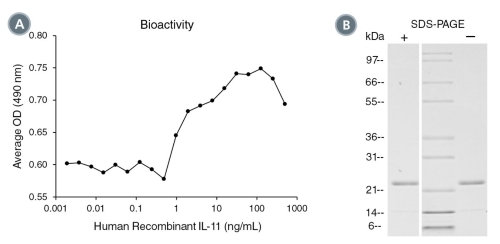
(A) The biological activity of Human Recombinant IL-11 was tested by its ability to promote the proliferation of TF-1 cells. Cell proliferation was measured using a fluorometric assay method. The EC50 is defined as the effective concentration of the growth factor at which cell proliferation is at 50% of maximum. The EC50 in the above example is 1.68 ng/mL. (B) 1 μg of Human Recombinant IL-11 was resolved with SDS-PAGE under reducing (+) and non-reducing (-) conditions and visualized by Coomassie Blue staining. Human Recombinant IL-11 has a predicted molecular mass of 19.3 kDa but migrates to an apparent molecular mass of 23 kDa.

